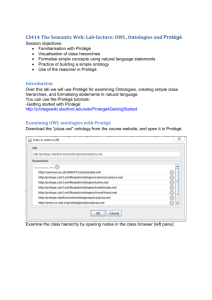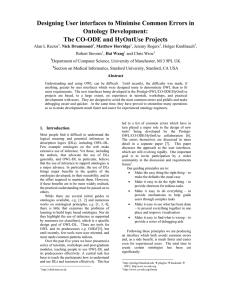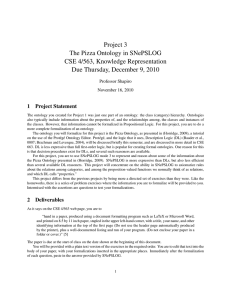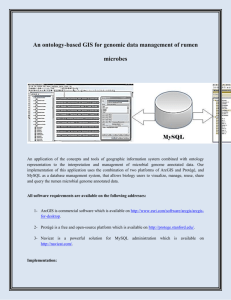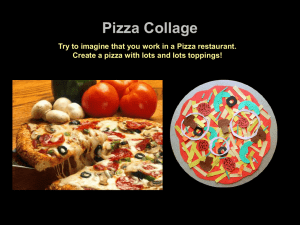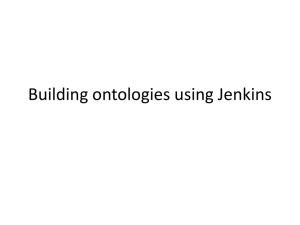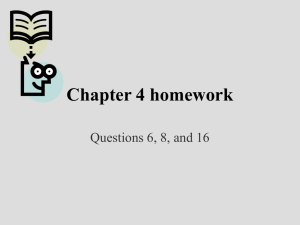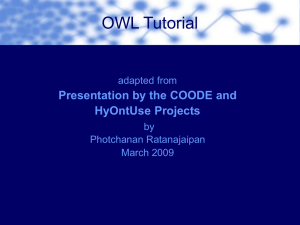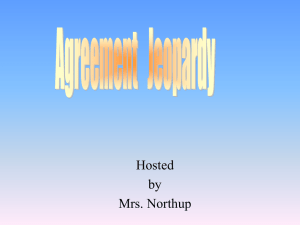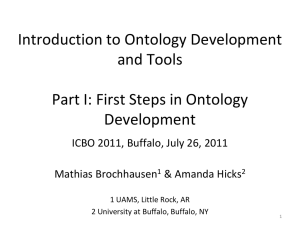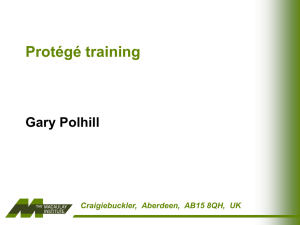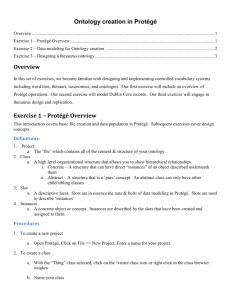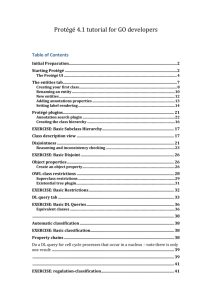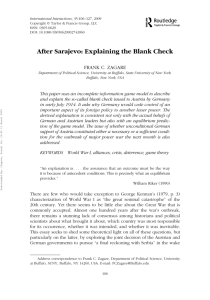Pizza
advertisement
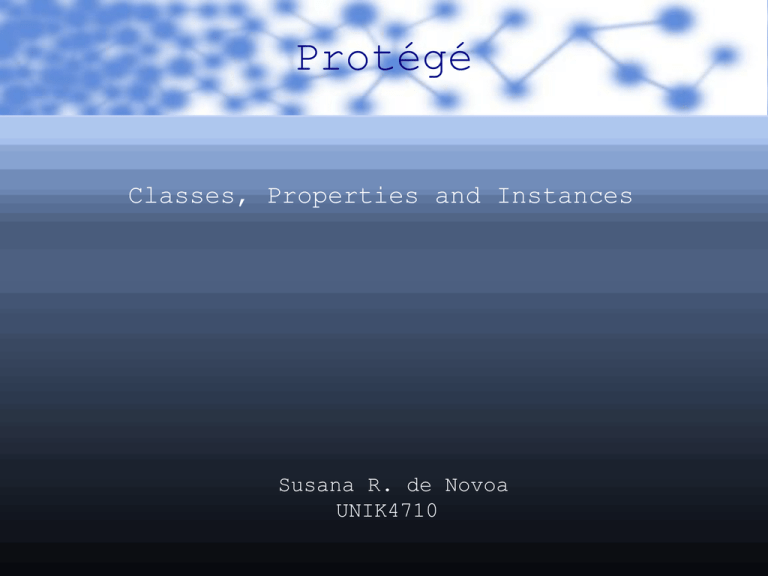
Protégé Classes, Properties and Instances Susana R. de Novoa UNIK4710 Protégé Tutorial : Overview Session 1: Basic Concepts Session 2: Tutorial Scenario Session 3: Exercises 2 Session 1: Basics Concepts Review of OWL Intro: Protégé 3 Review of OWL What’s inside an OWL ontology: Classes Relations between classes (disjoints, equivalents...) Properties Characteristics of properties (transitive, …) Individuals 4 Review of OWL Person Elvis Belgium Country Holger Paraguay Kylie = class (concept) Latvia S.Claus China Hai = individual (instance) = property (relationship) Surf Preferences Climb 5 Intro: Protégé Go to: http://protege.stanford.edu/download/registe red.html Download full Protégé 3.5 Beta Install the software 6 Intro: Protégé 1. Select “New Project…” 2. Select “OWL/RDF Files” 7 Session 2: Tutorial Scenario Protégé Tabs Interface: Creating Classes – Concept: Disjointness Interface: Creating Properties – Concept: Characteristics of properties – Concept: Describing Classes Interface: Creating Conditions – Concept: Characteristics of conditions8 Protégé Tabs Create basic Ontology Changing the GUI Populating the model Top-level functionality Extensions (visualisation) 9 Interface: Creating Classes Create and Delete classes Search for class 10 Interface: Creating Classes Class annotations Class name and documentation Disjoints widget Conditions Widget 11 Concept: Disjointness All classes could potentially overlap Pizza Ice Cream = individual This means an individual could be both a Pizza and a Ice Cream at the same time. 12 Concept: Disjointness • If we state that classes are disjoint Pizza Ice Cream = individual • This means an individual cannot be both a Pizza and a Ice Cream at the same time • We must do this explicitly in the interface 13 Concept: Disjointness Add siblings as disjoint Add new disjoint disjoint siblings Remove List of disjoint classes 14 Interface: Creating Properties • We want to say more about Pizza individuals, such as their relationship with other individuals • We can do this with properties Pizza PizzaTopping = individual 15 Interface: Creating Properties Properties can be in a hierarchy Create property Search for property 16 Concept: Characteristics of properties There can be at most one individual (range) that is related to the domain individual via the property: “hasMother” The inverse property is functional: “hasMother → hasChild” P(A,B) -> P(B,A) If a property P is symmetric, and the property relates individual A to individual B : “hasSibling” P(A,B) and P(B,C) -> P(A,C) If a property P is transitive, and the property relates individual A to individual B, and also individual B to individual C: “hasAncestor” 17 Concept: Describing Classes Pizza SpicyPizza VegetarianPizza Pizza Base DeepPanBase ThinAndCrispyBase 18 Interface: Creating Conditions Conditions asserted by the ontology engineer Add different types of condition Definition of the class Description of the class Conditions inherited from superclasses 19 Interface: Creating Conditions Restricted Property Restriction Type Filler Expression 20 Concept: Characteristics of conditions Define a condition for property values: AllValuesFrom: All values of the property must be of a certain type. SomeValuesFrom: At least one value of the property must be of a certain type 21 Concept: Characteristics of conditions HasValue : At least one of the values of the property is a certain value. Cardinality: The property must have at least/at most/exactly x values 22 Summary You should now be able to: Identify components of the Protégé-OWL Interface Create Primitive Classes Create Properties Create some basic Restrictions and Conditions on a Class Next lesson: Properties & Rules. 23 Session 3: Exercises Create a MargheritaPizza Start with your existing ontology 1. Create a subclass of Pizza called NamedPizza 2. Create a subclass of NamedPizza called MargheritaPizza 3. Create a restriction to say that: “Every MargheritaPizza must have at least one topping from TomatoTopping” 4. Create another restriction to say that: “Every MargheritaPizza must have at least one topping from MozzarellaTopping” 24 Session 3: Exercises Create other pizzas Start with your existing ontology 1. Add more topping ingredients as subclasses of PizzaTopping Use the hierarchy, but be aware of disjoints 2. Create more subclasses of NamedPizza 3. Create a restrictions on these pizzas to describe their ingredients 4. Save this for the next session 25 Thank You • Feedback on tutorial appreciated • Software / resources / community at: – http://www.co-ode.org/ – http://protege.stanford.edu/ 26

